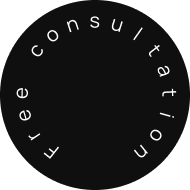Back
Updated at: October 11, 2025
Design Trends 2026: From Screens to Senses, From Interface to Trust

2026 marks the year when digital design moves beyond aesthetics — becoming the architecture of interaction between humans and machines. Just like “IT Trends 2025” reflected a shift in tech, 2026 reflects a move toward ethical, personalized, and emotional design.
1. AI as Co-Designer: Interfaces That Adapt to You
AI is no longer just a tool — it's a creative partner.
- PrototypeAgent builds layouts from voice commands.
- Uizard and Galileo AI generate UIs from text prompts.
- ML plug-ins in Figma are becoming mainstream.
In 2026, interfaces adapt in real-time — to mood, context, and user habits. Not the future — the new normal.
2. Ethical Design: From Bonus to Baseline
Companies like Microsoft and Salesforce are integrating ethical design standards:
- pop-up transparency on data usage
- opt-out of AI recommendations
- in-house design ethicists to ensure trust, not just usability
Design isn’t just about how it works — but how it respects the user.
3. Spatial & Invisible Interfaces
The screen is no longer the focal point. With AR, voice, and wearables, interfaces are entering physical space.
- Ray-Ban Meta Glasses shift UI into the real world
- Humane AI Pin — a screenless device using voice and projection
- Apple Vision Pro sets the new spatial UX standard
Designers now shape movement, space, and sensation — not just screens.
4. Neo-Minimalism: Warm, Tactile, Emotional
Minimalism stays — but it softens, deepens, and becomes more human.
- Liquid Glass in macOS introduces translucent, glassy layers
- Neumorphism returns, adapted for accessibility
- Tools like Framer and Spline add texture, light, and depth
We’re seeing a shift toward interfaces that are felt, not just seen.
5. Mixed Media & Experimental Visuals
2026 is all about hybrid visual styles:
- Brands like A24 and Moncler mix textures, pixel fonts, noise, 3D
- Retro-futurism thrives with glitchy typefaces and grain overlays
It’s a visual rebellion against tech uniformity — injecting authenticity into sterile pixels.
6. Storytelling by Design: Motion, Sound & Micro-Narratives
Design tells stories — step by step.
- Nike apps use animation and sound to create narrative arcs
- Apple Music Classical adds gesture-based 3D exploration
- Notion turns onboarding into dynamic story-driven flows
This isn’t animation for show. It’s micro-storytelling for engagement.
7. Sustainable UX: Efficiency as Aesthetic
Green design isn’t a color — it’s a strategy.
- Dark modes save up to 40% energy on OLEDs
- Google Fonts Performance Mode optimizes typography for 3G
- Design tokens and reusable components reduce waste
UX sustainability = design responsibility.
8. Seamless & Voice Interfaces
- Biometric logins (Face ID, fingerprint, palm scan) are standard
- Magic Links replace passwords in Slack and Notion
- Voice commands dominate in Tesla, Sonos, and smart speakers
Less effort = more trust and security.
Final Thought: Design Is the Language of Trust
2026 confirms: design is no longer just what users see — it’s how they feel, decide, and connect.
- It makes AI understandable
- It makes data approachable
- It makes technology human
If you're a designer, product owner, or brand, ask yourself: “How does our interface feel? Is it trusted? Would users come back to it?”
Now is the perfect time to rebuild your digital experience for the 2026 era.
Summary:
In the evolving landscape of digital design, the focus is shifting toward creating interactive experiences that prioritize ethics and emotional connection. Artificial intelligence is transforming from a mere tool to a collaborative partner in design, enabling real-time adaptation of interfaces based on user mood and habits. Ethical design has become a fundamental standard, with companies emphasizing transparency in data usage and integrating design ethicists to foster trust. The prominence of screens is diminishing as spatial and invisible interfaces emerge, utilizing augmented reality and voice technology to enhance user interaction in physical environments. Neo-minimalism is evolving to incorporate warmth and tactile elements, creating interfaces that resonate on a deeper emotional level. Designers are also embracing mixed media and experimental visuals, breaking away from uniformity to inject authenticity into their work. Storytelling through design is becoming prevalent, with micro-narratives enhancing user engagement through animation and sound. Sustainability in user experience is gaining traction, with strategies that prioritize energy efficiency and reduce waste becoming key considerations. Seamless and voice interfaces are now standard, enhancing security and trust through biometric authentication and simplified user interactions. Ultimately, design is recognized as a vital language of trust, influencing how users perceive and connect with technology, prompting designers to reflect on the emotional and relational aspects of their creations.
Read also:
designtrends2026
UIDesign
AIinDesign
ethicaldesign
spatialinterfaces
ARUX
voicedesign
minimalism
neominimalism
tactiledesign
emotionaldesign
mixedmediaUX
experimentalvisuals
storytellingdesign
sustainableUX
biometricUX
passwordless
interfaceoftrust
digitaldesign
adaptiveinterfaces
creativeAI
FigmaAI
AppleVisionPro
RayBanMeta
humaneAI
designethics
UXfuture
voiceUI
techdesign
designinnovation
UX2026




